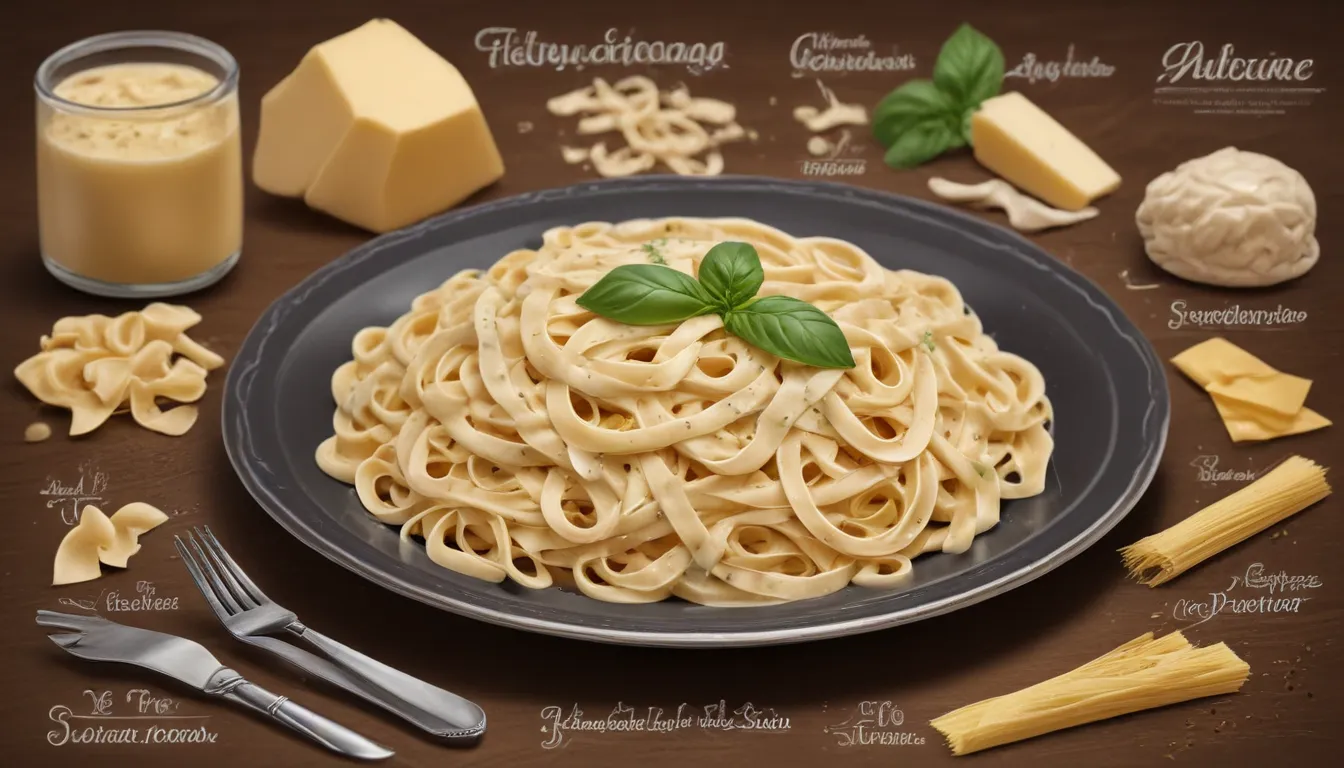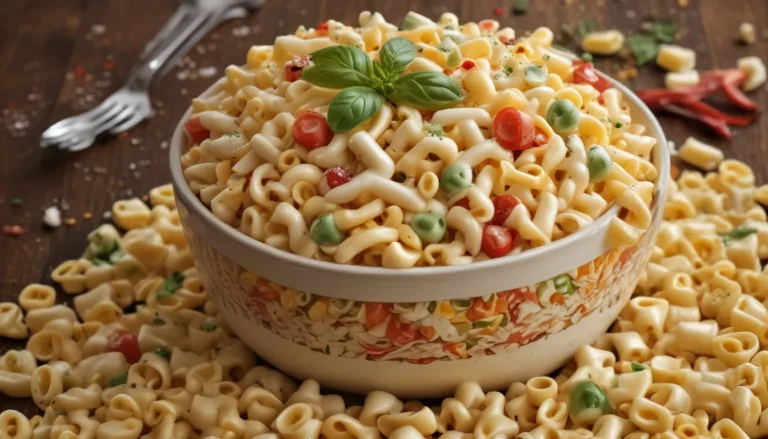The pictures in our articles might not always show exactly what the text is talking about. We use these images to make the article more interesting and eye-catching. They are there to add to the text, but not to replace it or show every detail.
Fettuccine Alfredo is a beloved Italian pasta dish enjoyed by many for its creamy and indulgent flavors. However, understanding the nutritional value of this classic dish is essential for making informed dietary choices. In this comprehensive guide, we will explore the key nutrition facts of Fettuccine Alfredo, providing you with valuable insights to help you enjoy this dish in a balanced and mindful way. From calorie content to protein and vitamin levels, we will delve into the details to help you make informed decisions about incorporating Fettuccine Alfredo into your diet.
Indulgent Fettuccine Alfredo
Fettuccine Alfredo is a rich and decadent pasta dish known for its velvety texture and flavorful combination of butter, Parmesan cheese, and heavy cream. While it is a comfort food favorite for many, it is important to enjoy it in moderation due to its high calorie and fat content.
Nutritional Considerations
When indulging in Fettuccine Alfredo, it is essential to be mindful of its nutritional profile. With its high calorie, fat, and sodium content, pairing it with vegetables or salad can help create a more balanced meal. Homemade versions of Fettuccine Alfredo offer the flexibility to tailor the dish to fit your dietary needs, making it a versatile option.
Understanding the Nutrition Facts of Fettuccine Alfredo
Calories
Fettuccine Alfredo is a calorie-dense pasta dish, typically containing around 1200-1500 calories per serving. It is important to be mindful of portion sizes to avoid excessive calorie intake.
Fat Content
The richness and creaminess of Fettuccine Alfredo come from its high fat content, with a single serving containing approximately 60-80 grams of fat. Choosing lighter alternatives to traditional ingredients can help reduce the fat content of the dish.
Sodium
Parmesan cheese, a key ingredient in Fettuccine Alfredo sauce, contributes to its savory flavor but also adds to its sodium content. A serving of Fettuccine Alfredo can contain around 1000-1500 milligrams of sodium.
Carbohydrates
As a pasta-based dish, Fettuccine Alfredo is rich in carbohydrates, with a typical serving containing approximately 100-120 grams. Choosing whole wheat or vegetable-based pasta can provide a healthier carbohydrate option.
Protein Content
While not a high-protein dish, Fettuccine Alfredo still offers a moderate amount of protein, with each serving providing around 20-30 grams. Adding lean protein sources like chicken or shrimp can enhance the protein content of the dish.
Vitamin and Mineral Content
Fettuccine Alfredo is not particularly rich in essential vitamins and minerals. However, Parmesan cheese used in the sauce contributes some calcium and vitamin A, adding a nutritional boost to the dish.
Fiber
Due to its creamy sauce and pasta base, Fettuccine Alfredo lacks sufficient fiber content, with a single serving typically containing only 2-4 grams. Adding fiber-rich vegetables or incorporating whole wheat pasta can increase the fiber content of the dish.
Serving Size
Nutrition facts for Fettuccine Alfredo are usually based on a standard serving size of about 1 cup or 220 grams, making it easy to track your calorie and nutrient intake.
Enjoying Fettuccine Alfredo Mindfully
Fettuccine Alfredo is a beloved Italian dish enjoyed for its creamy texture and rich flavors. Whether you are savoring it as a special treat or incorporating it into your regular meals, here are some tips for enjoying Fettuccine Alfredo mindfully:
- Moderation: Enjoy Fettuccine Alfredo in moderation as part of a balanced diet to avoid excessive calorie and fat intake.
- Pairing: Pair Fettuccine Alfredo with a side of vegetables or salad to add nutritional value and balance the meal.
- Homemade Options: Opt for homemade versions of Fettuccine Alfredo to control the ingredients and customize the dish to fit your dietary preferences.
- Healthy Alternatives: Experiment with healthier alternatives to traditional Fettuccine Alfredo ingredients, such as whole wheat pasta, low-fat dairy products, and lean protein sources.
The Timeless Appeal of Fettuccine Alfredo
Fettuccine Alfredo has stood the test of time as a classic pasta dish loved by many. Its origins in Rome, Italy, and its rich, creamy texture have made it a favorite among pasta enthusiasts worldwide. While traditional Fettuccine Alfredo remains a popular choice, there are also variations of the dish that incorporate additional ingredients like chicken, shrimp, or vegetables, offering a unique twist on this timeless classic.
Making Informed Choices
By understanding the nutritional facts of Fettuccine Alfredo and making informed choices about portion sizes and ingredients, you can continue to enjoy this delectable dish while maintaining a healthy and balanced diet. Whether you choose to indulge in the traditional version or opt for healthier alternatives, Fettuccine Alfredo can be a satisfying and enjoyable dining experience when approached mindfully.
Conclusion
In conclusion, Fettuccine Alfredo is a delicious and indulgent pasta dish that can be enjoyed in moderation as part of a balanced diet. By being mindful of its calorie, fat, and sodium content, and making adjustments to suit your dietary needs, you can continue to savor the flavors of Fettuccine Alfredo while prioritizing your health and well-being. With a variety of options for customization and healthier alternatives, you can create a version of Fettuccine Alfredo that aligns with your nutritional goals and preferences.
FAQs
Q: Is Fettuccine Alfredo a healthy dish?
A: Fettuccine Alfredo is a rich and indulgent dish high in calories, fat, and sodium. However, with mindful choices and adjustments, it can be enjoyed as part of a balanced diet.
Q: How many calories are in a serving of Fettuccine Alfredo?
A: The calorie content of Fettuccine Alfredo can vary but typically ranges from 600 to 1200 calories per serving, making portion control important.
Q: Can I make a low-fat version of Fettuccine Alfredo?
A: Yes, you can create a low-fat version of Fettuccine Alfredo by using alternative ingredients like low-fat dairy products and lean protein sources.
Q: Are there alternatives to traditional Fettuccine Alfredo?
A: Yes, there are healthier alternatives to traditional Fettuccine Alfredo, such as whole wheat pasta, light sauces, and added vegetables for a nutritious twist on the classic dish.
Q: Can I enjoy Fettuccine Alfredo while on a weight loss diet?
A: While Fettuccine Alfredo is not typically a weight loss-friendly dish, it can be incorporated in moderation with portion control and healthy ingredient swaps.
Rest assured that the information we provide is meticulously reviewed for accuracy and authenticity, ensuring that you have access to trustworthy and engaging content. We are dedicated to delivering valuable insights and diverse perspectives to enhance your understanding and enjoyment of the topics we cover. Thank you for exploring and learning with us!






